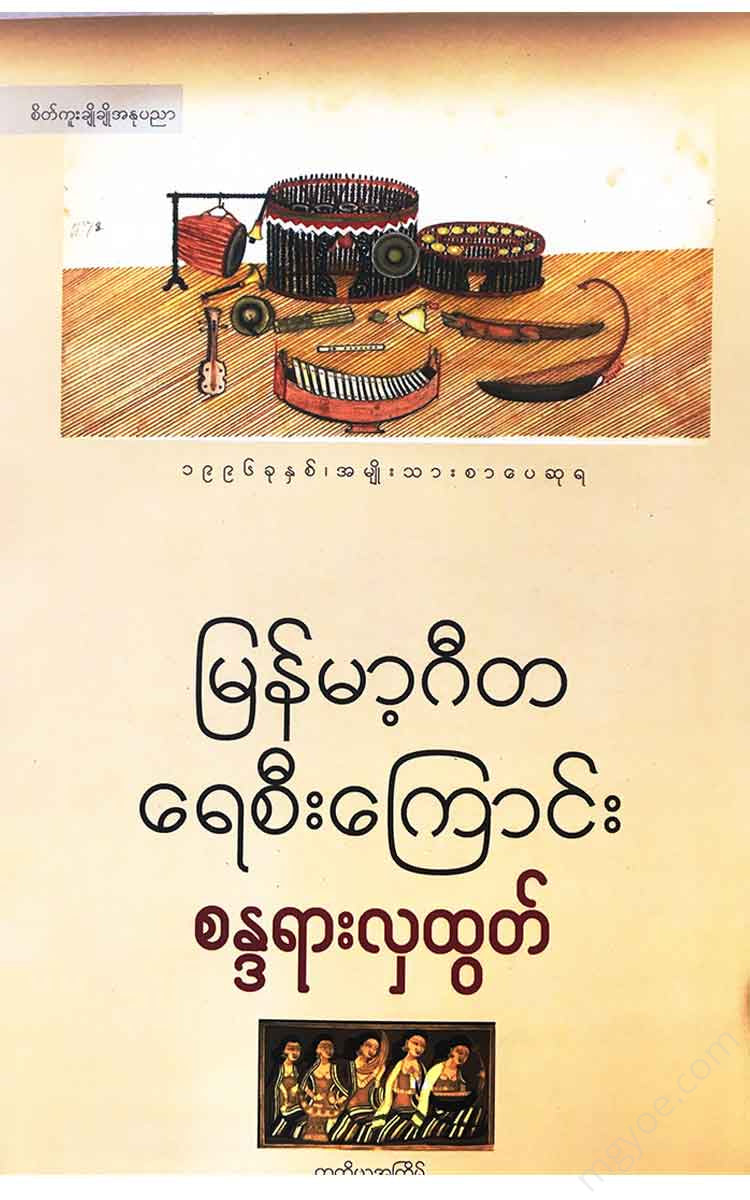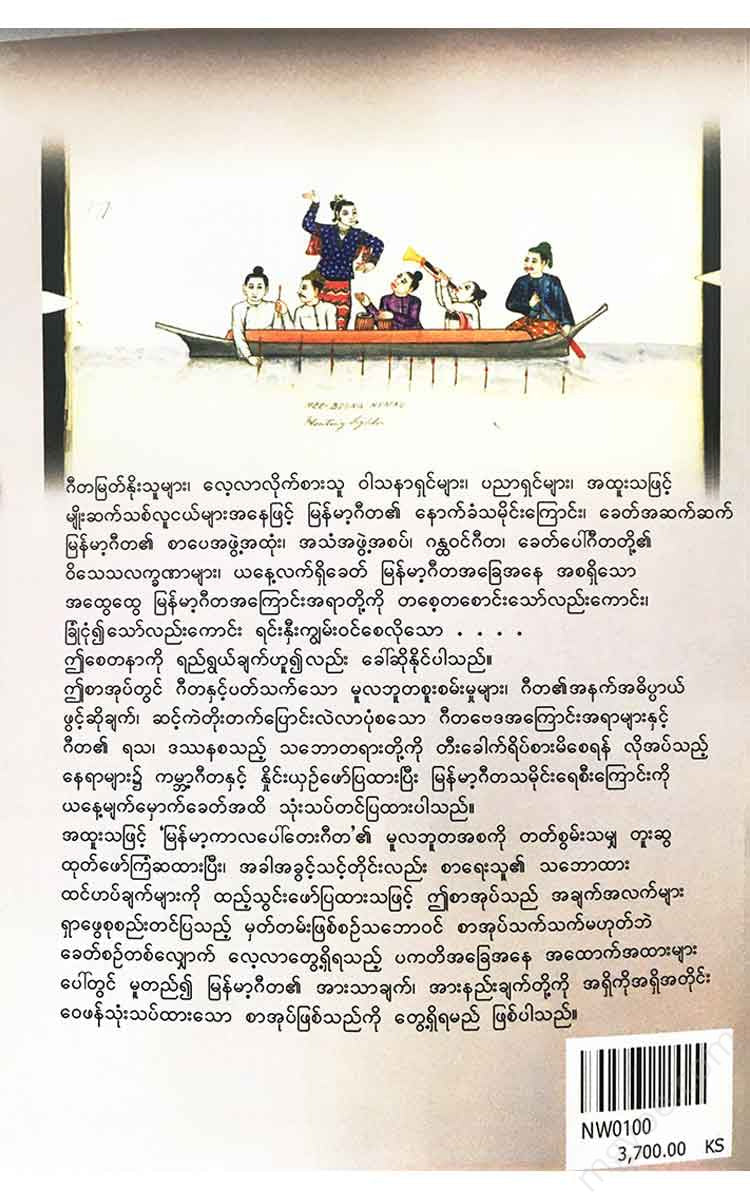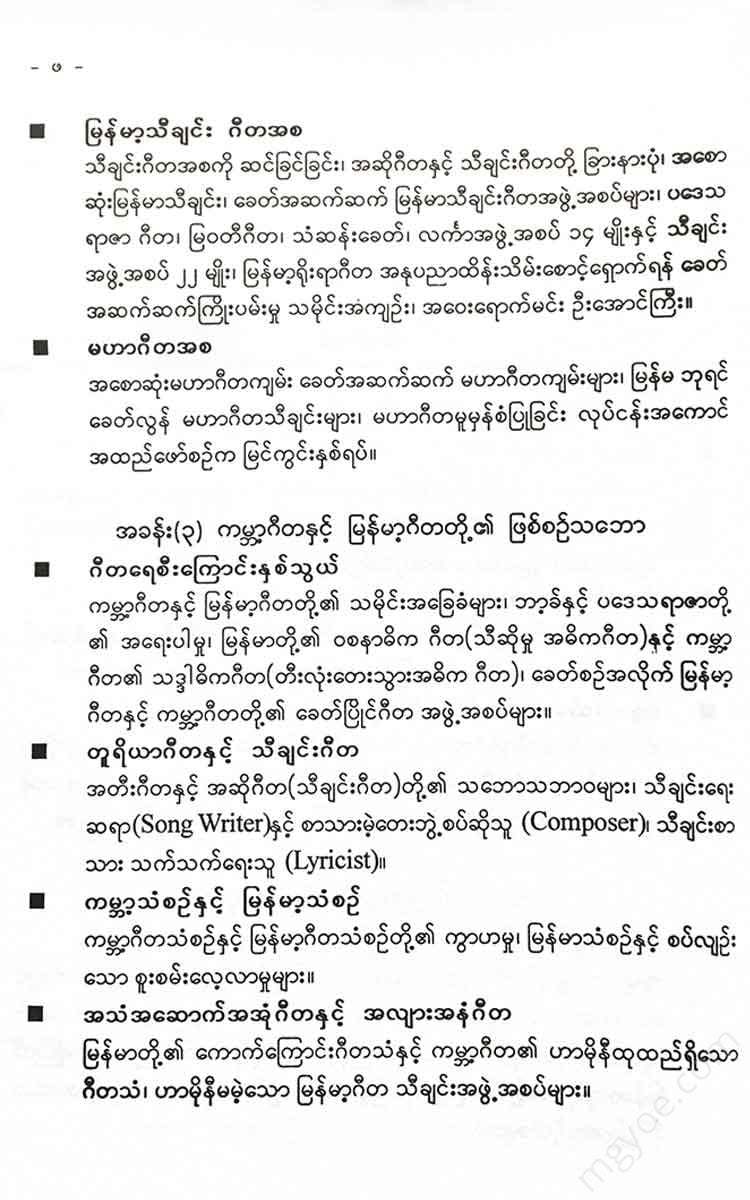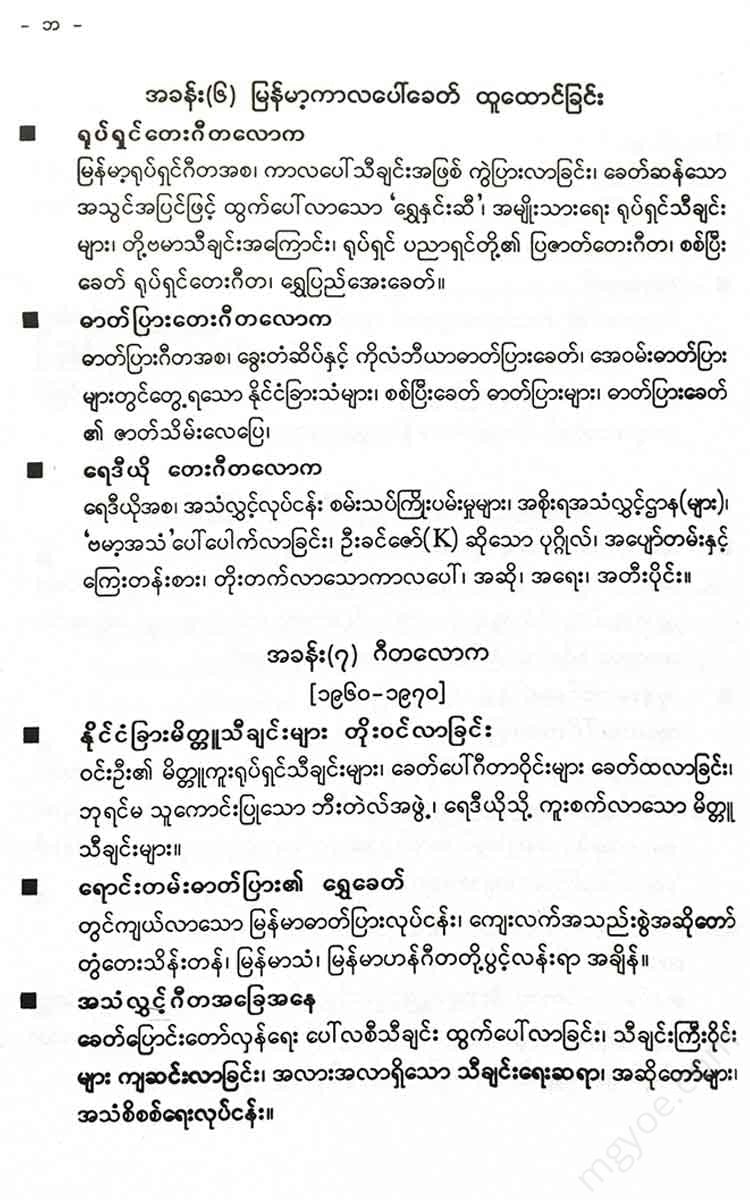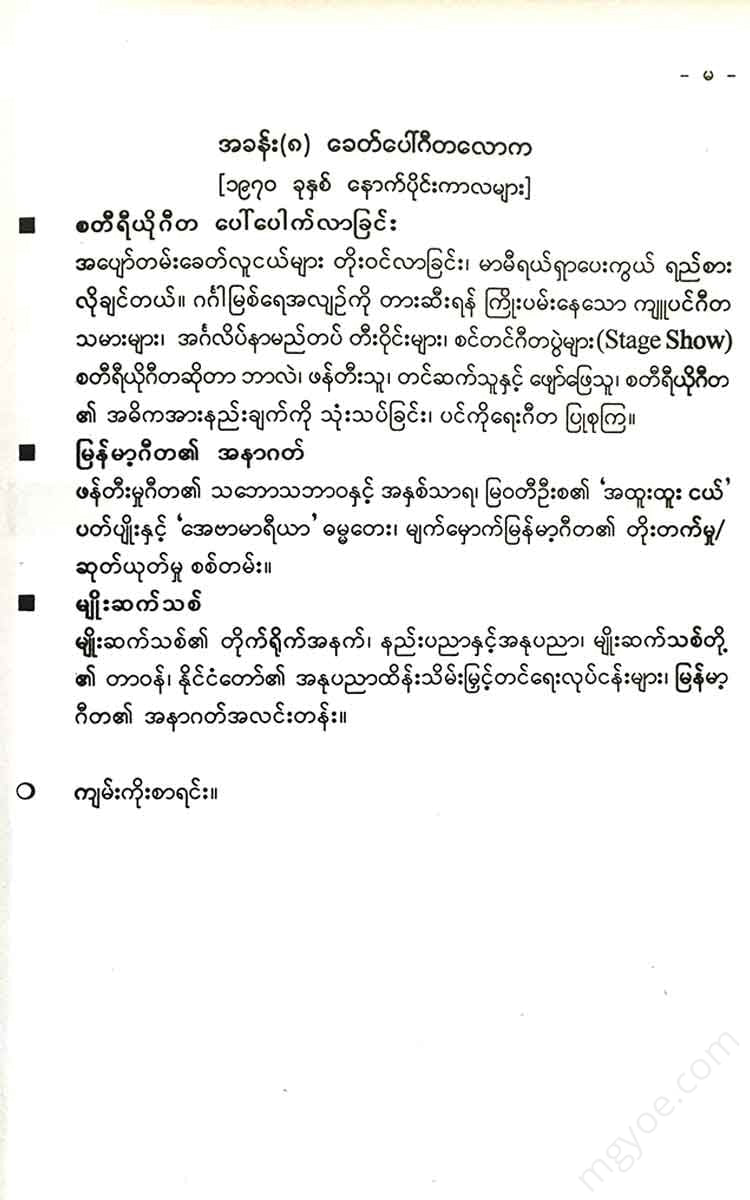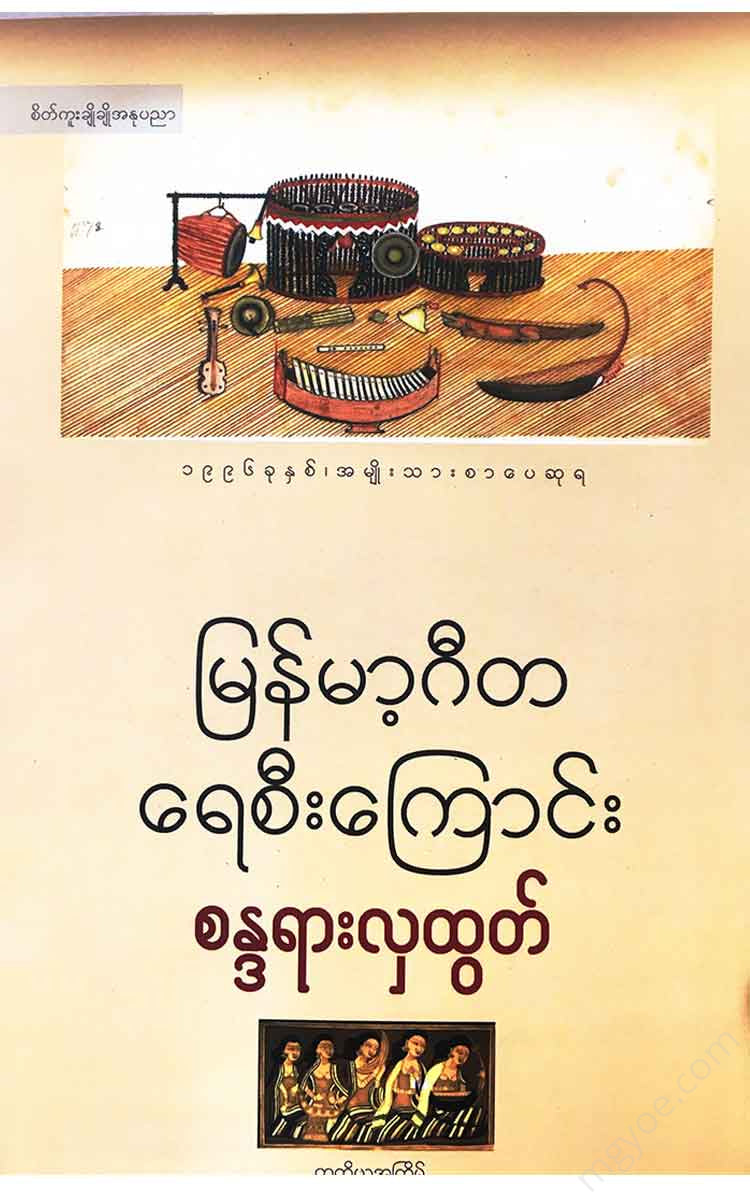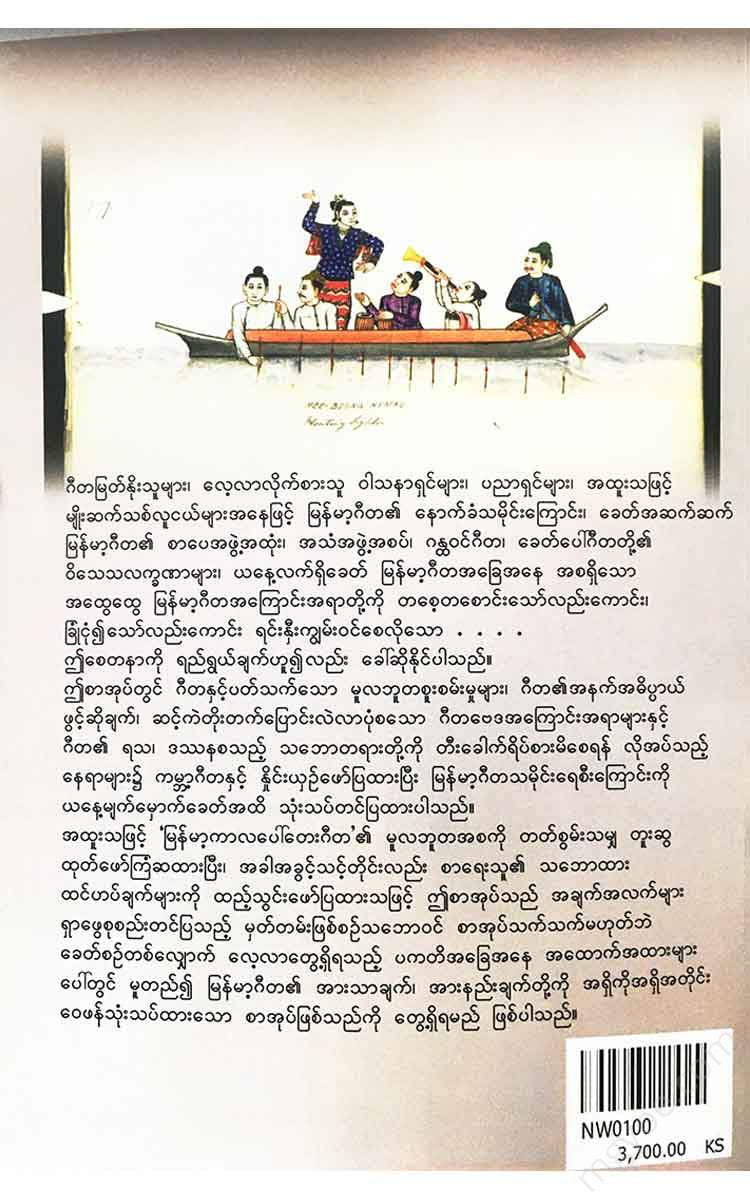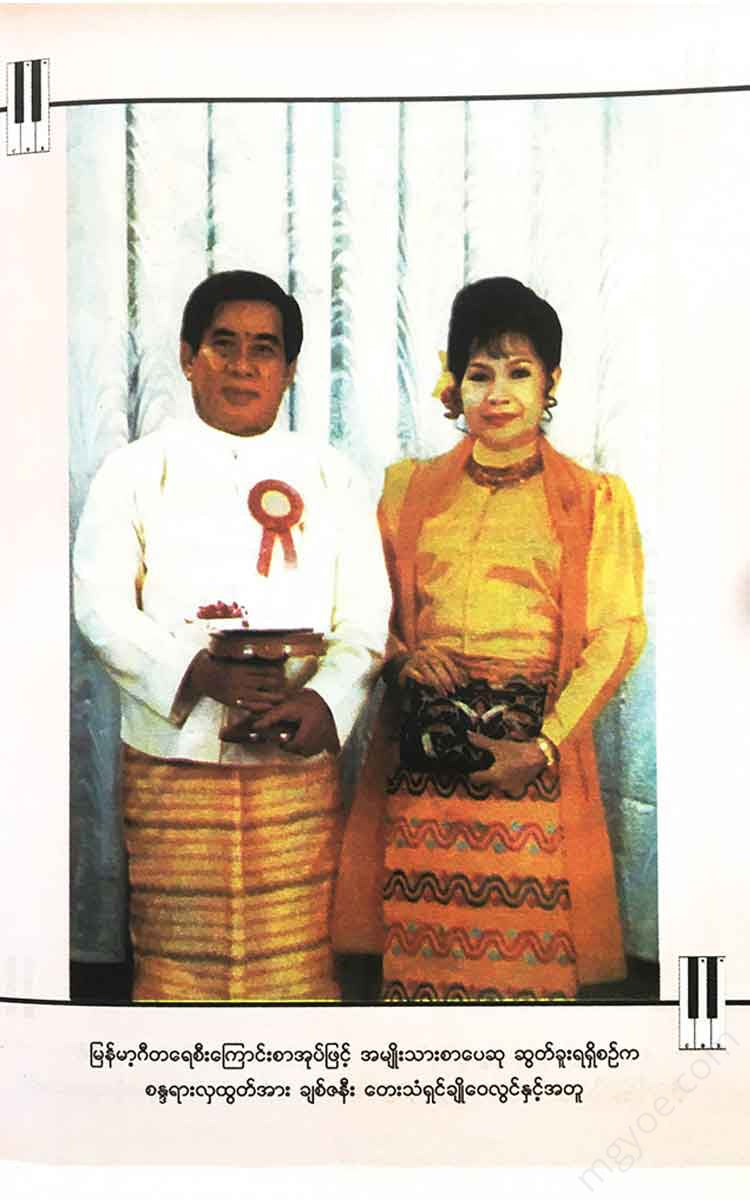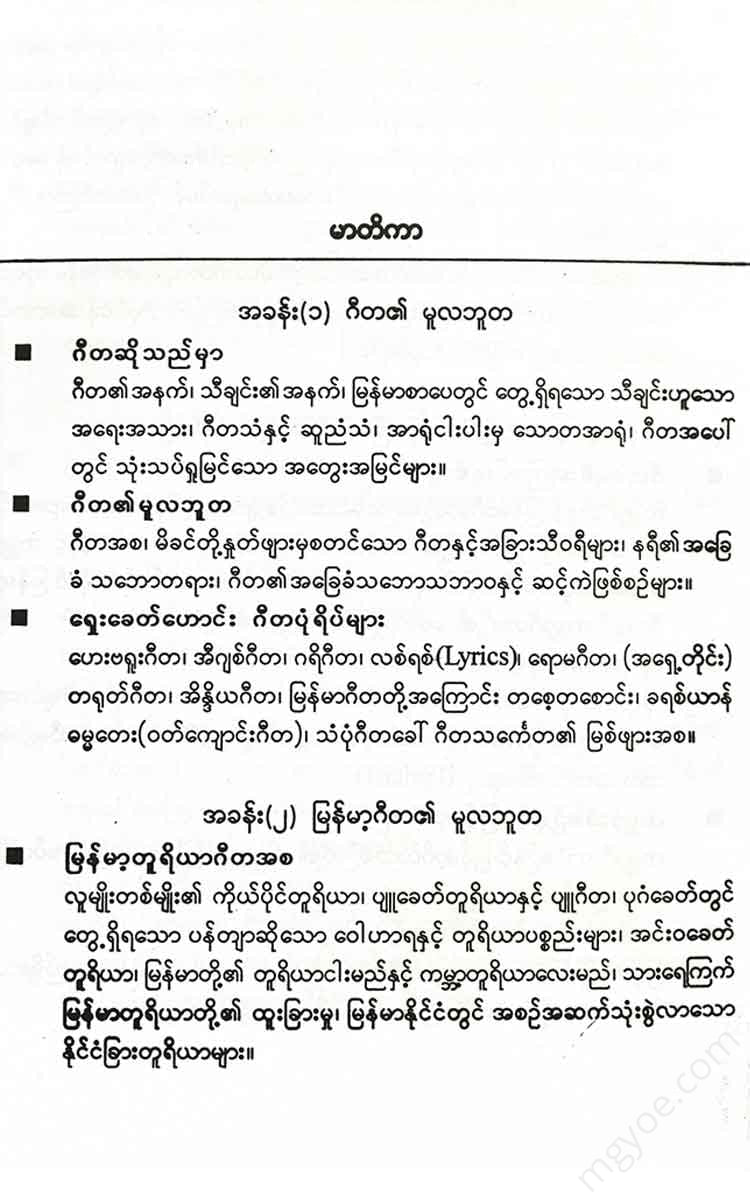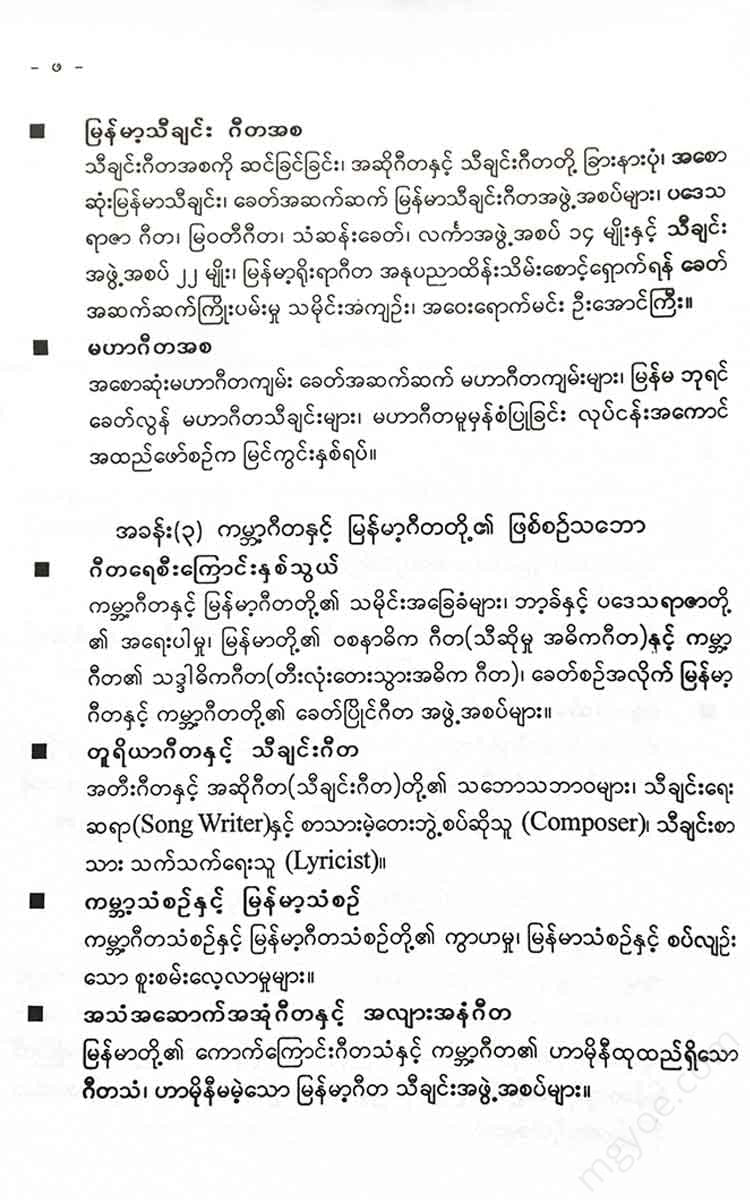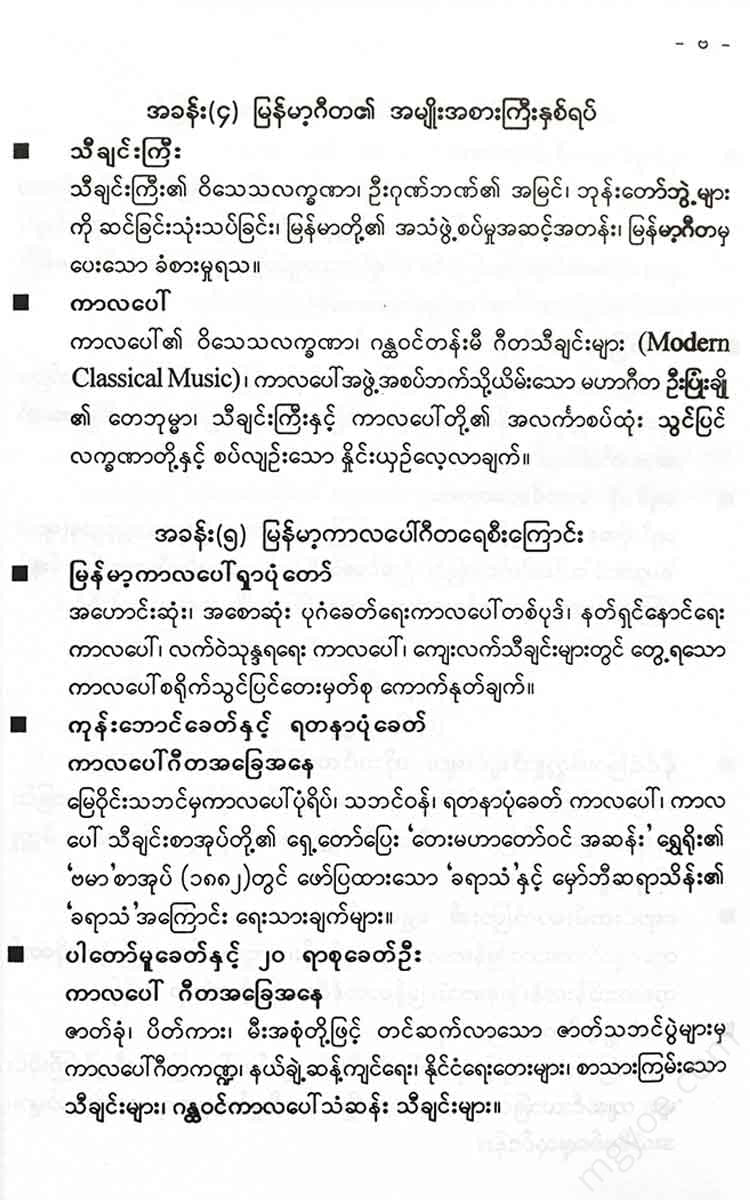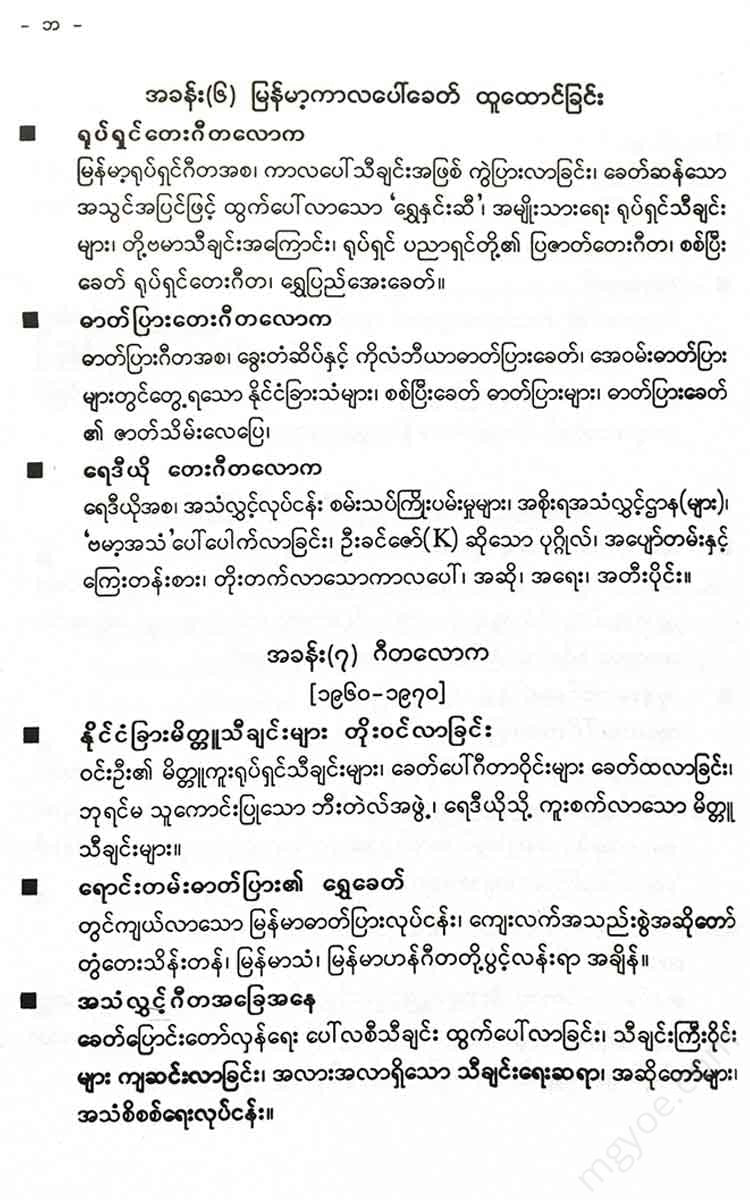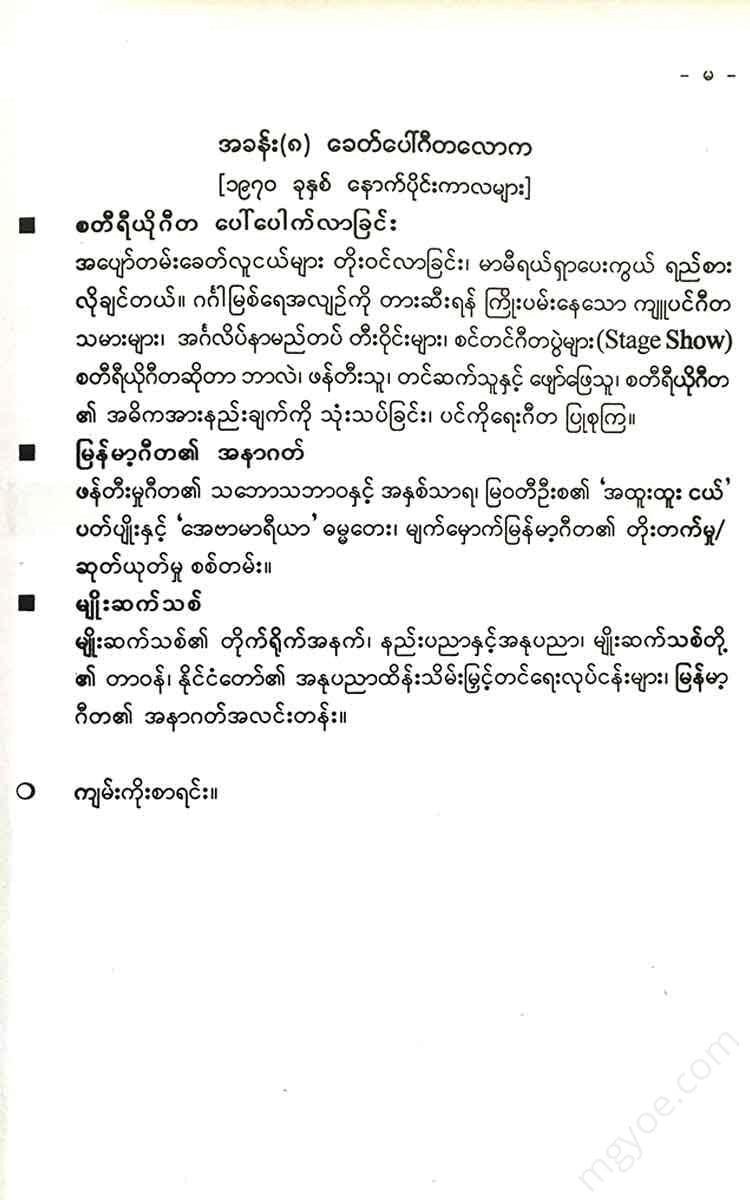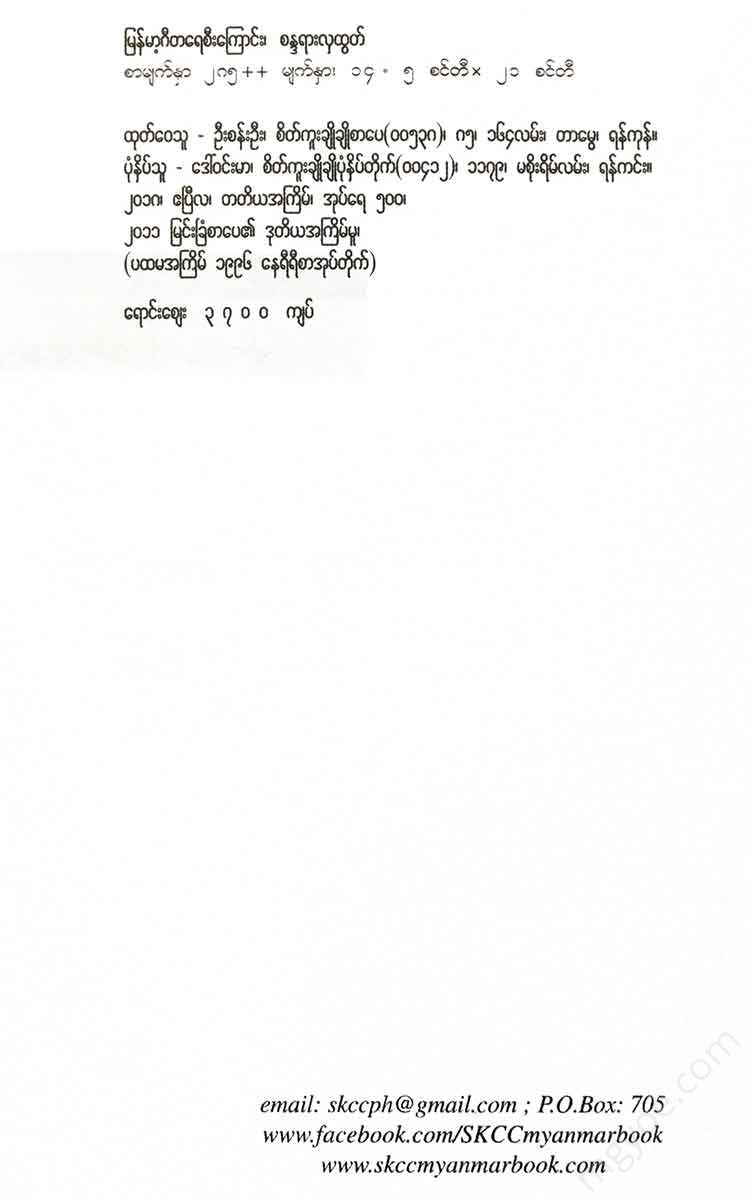စိတ်ကူးချိုချိုစာပေ
Sandara Hla Htut - Burmese music currents
Sandara Hla Htut - Burmese music currents
Couldn't load pickup availability
Music is
Before exploring the origins of music, it is necessary to first understand what music is, how it came to be, and what its meaning is.
Gita is a Pali word meaning song. It also means singing. “Song” as we understand it today is a musical composition that combines text and sound. “Singing” means producing, chanting, or reciting a musical composition with text.
Song is a compound word that combines two words: “sung” and “chin”. The meaning of “thi” here is to compose, to arrange, and “chin” means a subject. Therefore, song is a composition (composition) of subjects. In the past, these compositions were often called “achin achin nge, achin gyi”, etc., and “echin”, “aichin”, “echin”, “kachin”, “thachin”, “natchin”, etc. are also such literary and musical compositions. Song encompasses all these forms, so it has a very broad meaning.
Regarding the word "song", in the poem "Shwe Hintha Po" by Shin Tejasara, a poet of the Inwa period...
"The five names, the five harpsichords,
"The song is a circle, the clapping of hands," and in the Manawhari Poo of the Taungoo period, Nawaday wrote, "The beautiful spectacle, the divine court, the young girl, the harp, the music, the music, the flowers
Today, a song is a musical composition with lyrics that are sung orally. Musical compositions without lyrics are not called songs, but are classified by their melody, melody, melody, etc.
In the Myanmar Dictionary, Volume 1, the meaning of music is not only singing, but also playing. In the Svamyatthapakathani , it is explained that there is a saying of the great masters that "If it lasts for 3 meters, it is a sound of music." The word "short" means a moment, a flash of time, and "short" means that it reaches the sound of music. Therefore, a sound that lasts for 3 meters or more is a sound of music.
The essence of music is sound. Just as there is no literature without music, there is no music without sound. However, sound alone cannot be called music. There must also be time. When the fluctuations of sound, the arrangement of low and high pitches, the amplitude, the tension and release of the notes are combined with the rhythmic movement of the notes, music is formed. Therefore, music is basically the combination of sound and sound. Sound can also be the sound of a human voice. It can also be the sounds of instruments played by people. Time is time that moves in a regular manner.
With the development of the times, musicology has also evolved. In addition to the three artistic aspects of singing, playing, and playing, music includes various skills such as orchestration, musical arrangement, which is the art of managing the musical sounds of various instruments to play systematically, harmony, which is the art of combining sounds, and counterpoint, which is the art of composing parallel melodies that go against the main melody. In reality, in music, "singing" or "singing" is only a branch or part of the main body of music, and it is not sufficient to describe music in these terms.
In his book “History of Myanmar Literature,” U Pe Maung Tin wrote, “Music and songs are the universal sound that, when the heart is happy and joyful, becomes a deep and heartfelt emotion in the stomach, and cannot be held back, but bursts out from the mouth.”
Therefore, these songs and music are sounds that spontaneously emerge from the heart when people are happy in social, religious, and domestic matters. Therefore, it is said that music and songs exist according to race, whether among savages or among domesticated people.
AS Hornby's 1960s Oxford Advanced Learner's Dictionary of Current English defines music as follows:
Music/n (1) art of making pleasing combinations of sounds in rhythm, harmony, and counterpoint;
(2) the sounds and composition so made
(3) written or printed signs representing there sounds.
Music/N (1) According to the rhythm system, introduction, composition, and competitive melody techniques
The art of composing sounds to create a pleasant and enjoyable experience
(2) The result of this creation is the vocal ensemble and the melody, tune, song,
(3) The written and printed representations of the sounds created by the composition.
The final meaning is that music written in musical notation (or music) is also called "music."
Although not a dictionary definition, there are also definitions that present ideas about music based on one's own feelings and opinions. One of these is the idea of music, which was presented by an American music teacher named Marion Bauer in the opening of a paper she wrote called "The History of Music" -
It has been said that music is a record of social emotions written in sound over time.
Although it is concise and to the point, I would like to expand it a bit to make it more understandable to the general public and explain the music as follows.
Music is a musical composition that expresses all human emotions through human voices and sounds produced by human-made instruments, using artistic techniques such as pitch, volume, and rhythm.
Therefore, it is clear that music is not a random, chaotic, random sound. There is a very different difference between music and noise, which is called noise and disturbance. For example, the sound of children playing with an empty tin can on the street, the sounds coming from factories, blacksmith shops, sawmills, car body shops, and workshops, etc. are noises and are very disturbing to the human ear and the human mind.
When the rain stops, if you listen to the sound of raindrops falling one by one from the eaves of a house into the pots, it does not disturb the ear, and it does not become a noise or a disturbing sound. This is because it is not random, but falls regularly and systematically, and there is a rhythm in it. The presence of rhythm can capture the sense of calm to a certain extent. This can be seen from the experience of passengers who inevitably notice the regular sounds of the wheels of a train. If the raindrops fall into the pots not only as a single sound, but also as a variety of sounds, such as a high note, a low note, a middle note, etc., the sound will certainly take on a musical character and bring greater happiness. This is because not only do raindrops create a rhythm by falling regularly, but the sound of raindrops falling into the pots also produces low, high, and middle tones, creating a melody, which in the state of meditation becomes a pleasant, melodious music.
Of the five senses in the world, only two, the sense of sight and the sense of touch (rasa), can hold a prominent place in the realm of art. The other senses, the sense of taste (rasa), the sense of smell (gandha), and the sense of touch (phatthava), reside far outside the realm of art. There is no art based on smell, no art based on taste, no art based on physical touch.
Ancient Greek scholars said that among the five senses, only the visual and auditory senses were of high intellectual level, while the other three were inferior, and therefore they were suitable only for animals. The visual and auditory senses have been at the top of social relations and the evolution of human culture, and have become the most important senses of people along with the auditory sense. Therefore, various arts such as visual arts and auditory arts based on these two senses have also dominated this world with high qualities. Therefore, it is undeniable that music, which is an art form, also has a high place in the world and is an art with a deep and delicate level.
Share
